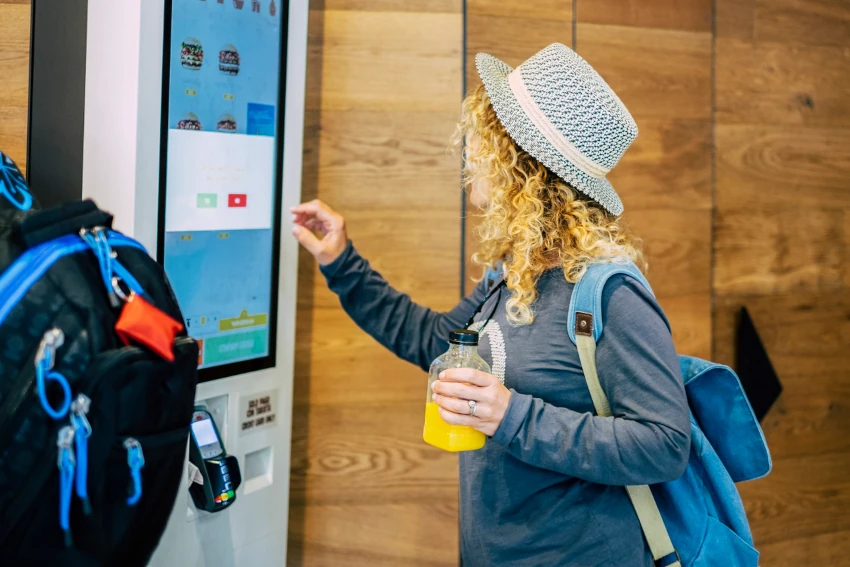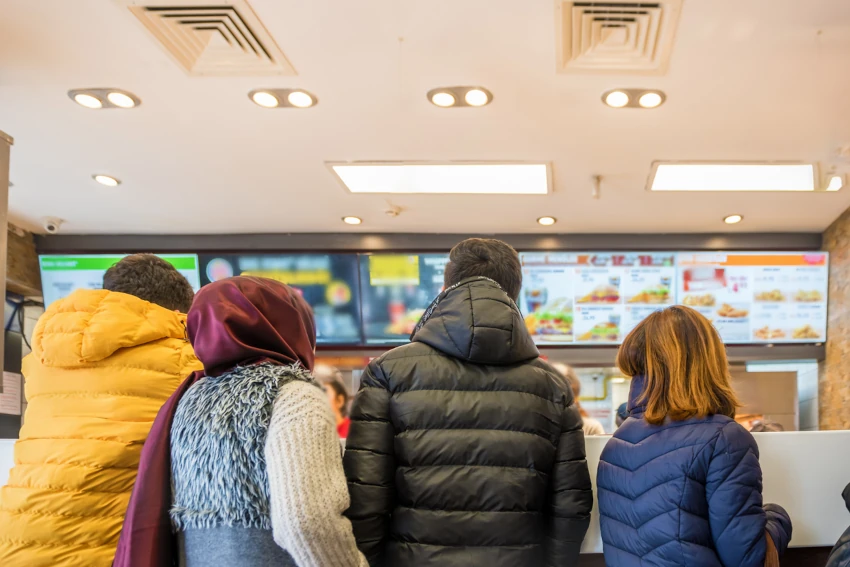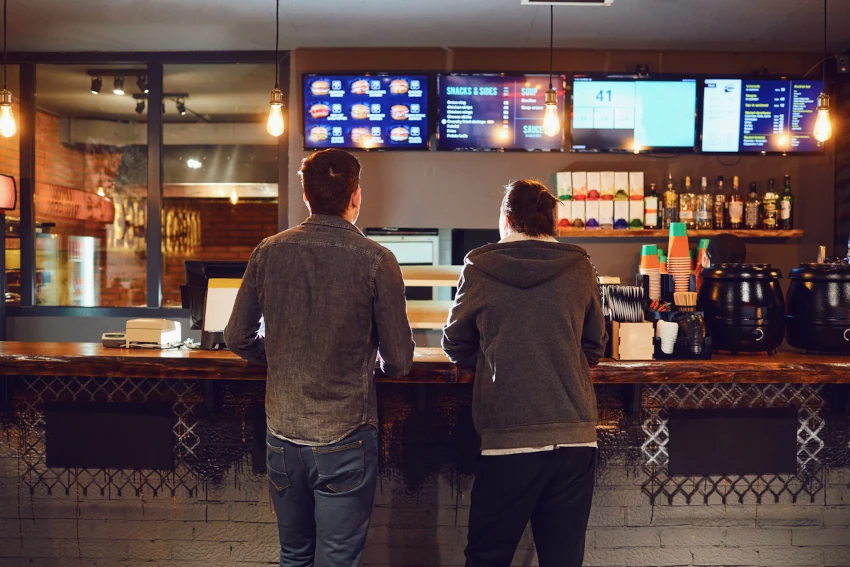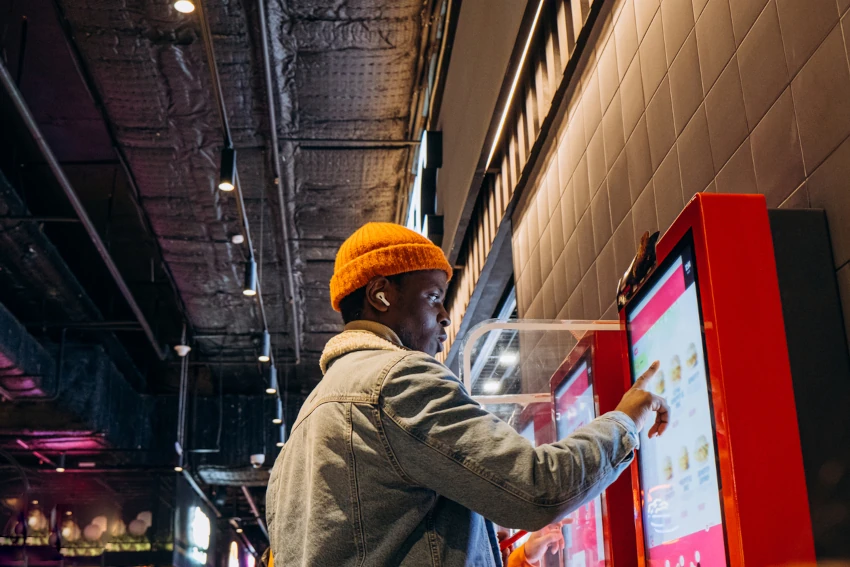QSR: What it Means and Top Strategies For QSR Digital Signage
Forecasts put the projected market size of the QSR industry in the year 2022 at 331.41 billion. It is expected that this food industry segment will only continue to grow in the next few years. Why? Not only is the food good tasting, but it is also affordably-priced than traditional restaurants with table service.

What Does QSR Stand For?
The acronyms QSR stand for many things depending on the context, but it’s an industry term in the food sector, meaning quick service restaurant.
The meaning of QSR in other categories includes:
- Quality surveillance representative (IT)
- Quality system review (academic and science)
- Quality system regulation (medical and government)
- And, in the miscellaneous category, quality synthetic rubber.
Actually, more than 20 meanings of the abbreviation QSR are available on Acronym Finder and similar websites.
Therefore, for all the definitions available, this blog focuses on quick-service restaurants. Delving past what QSR stands for, read on to find out about the standout characteristics of quick service restaurants, how they compare to other restaurants in the casual dining category, and the top strategies that food chains use on their digital signage.
About QSR Restaurants: Features and Characteristics
A quick-service restaurant is the proper industry term for what people commonly refer to as fast food restaurant or limited-service restaurant (LSR.) For instance, McDonald’s, Burger King, Pizza Hut, Starbucks, Subway, KFC, Taco Bell, and Wendy’s are some popular fast-food chains.
Here are some common characteristics of QSR Restaurants:
- A limited menu that can be cooked in a limited time frame
- Low price points per meal, starting at around $4
- Food is available for takeaway, and many have drive-throughs
- Simple interior design with table chairs and tabletops and a counter where customers pick up orders
- Primarily no table service: customers grab, sit, and go.
As the name suggests, these restaurants are quick-to-serve, as the food items require minimal preparation time. Moreover, the restaurants streamline their operations for maximum efficiency and fast service delivery while maintaining the standard of quality customers expect.
QSRs vs. Casual Restaurant Formats
There are distinct differences between full-service and quick-service restaurants. The latter falls in the category of casual restaurants alongside a couple of other restaurant types, namely, casual dining and fast-casual restaurants.

Apart from QSRs, casual dining restaurants have been around for a while and are another go-to when you need a casual meal but don’t want to spend time in the kitchen preparing it. For example, think Apple Bees, Outback Steakhouse, and Olive Garden.
The menu at these casual dining restaurants is more varied compared to what you’d find at a quick service restaurant. You’ll get more fish, poultry, beef, and salad options. Most also serve alcohol, unlike QSRs that serve limited non-alcoholic beverage options such as tea, coffee, smoothies, sodas, and juices.
Furthermore, the interior design, right from the seating arrangements to the floors and walls, is quite different from quick service restaurants. They have high-quality wooden chairs, tables, and big seating booths compared to the plastic chairs and tables at QSRs.
Borrowing from and bringing together elements from fast-food and casual dining restaurants is the concept of fast-casual dining. Panera Bread and Chipotle are among the leading examples of this type of restaurant, and the hybrid niche is booming.
In fact, fast-casual restaurants have a more diverse menu. The food items on the menu are also more upscale in that instead of the basic sandwiches you will find at QSRs; fast casuals have more signature offerings made from artisan bread.
Similarly, fast-casual establishments offer hand-tossed salads and not the pre-packaged kind you’ll find at fast-food chains. The price per meal at these fast-casual restaurants is higher than the standard QSRs.
Like QSRs, many fast-casual restaurants don’t provide table service. However, some have table runners that bring your order to the assembly area. The ambiance in this assembly area is more upscale than in fast-food restaurants, and some establishments even have fireplaces.
Top-Winning Digital Signage Strategies
The restaurant industry has evolved over the years. To keep up with the competition and meet the customers’ changing needs, quick-service restaurants have adopted some digital signage strategies and a few things off the trend’s pendulum.
1. Offer Bundle Pricing
Quick-service restaurants use menu boards to display the food items they offer. Price bundling, in what you may have seen on the menu as a meal deal or value meal, is a win-win for the restaurant and the customer.
Not only does it simplify the buying experience for the customer, but you also get to pay less for the value meal than what you’d pay if you purchased each item in the combo separately. On the other hand, the bundle pricing strategy allows fast-food restaurants to upsell by combining high and low-value food items. This strategy significantly increases the average value per transaction or order.

2. Invest in Marketing
Quick-service restaurants are very aggressive in their marketing campaigns, from TV commercials to running ads and promotions on social media platforms and food delivery apps. For instance, DOOH advertising is quite popular, especially among the top players in the industry, who are able and willing to spend heavily on marketing. Additionally, leading players in the industry have stretched their marketing budgets to partner with top celebrities and influencers for greater market capture and direct promotion.
Indeed, different ads target different groups of customers and always highlight the low prices and great taste of their menu selection. The marketing strategies point out the value addition for the customers and are real attention-grabbers, with mouth-watering colorful displays.
3. Healthier Food and Drink Options
Today’s customers want to get their food fast but are also more conscious about their health. Many QSRs have taken this seriously and added healthier food items to their menus.
Fast food joints with plant-based meat patties, low-carb wraps, diet drinks, smoothies, and salads enjoy more foot traffic and are among the fastest-growing brands in this industry. Additionally, more customers want to know what goes into preparing their favorite foods. In response, some restaurants share their ingredients and preparation methods with customers on their websites and social media platforms.
4. Contactless User Experience
Various digital channels have become increasingly popular for customers to order food from quick-service restaurants. Many customers prefer contactless ordering through self-service kiosks, so much so that they often spend more when ordering this way.
Similarly, customers like ordering through mobile apps. Fast-food restaurants continue to encourage customers to use these apps by offering freebies, credits, and other rewards. These restaurants have reiterated their commitment to developing their brand apps to meet multiple purposes in addition to contactless ordering and first-party delivery. In fact, with 3 million installs, the McDonalds app was the fastest-growing brand app in the first six months of 2022.
What Next for the Quick-Service Restaurant Industry?
Emerging and expected trends will continue to shape the fast-food segment. Whatever the trend, adding value to the customer while improving the restaurant’s bottom line will always be the ultimate goal.

On this, the industry experts say that in the next few years, quick-service restaurants will no doubt deploy more customer-focused technology, from ordering to delivery, in addition to looking at more customization opportunities. The industry is fast evolving, and it will be great to see what the future holds for all players and stakeholders, including fast-food restaurants and their customers.


